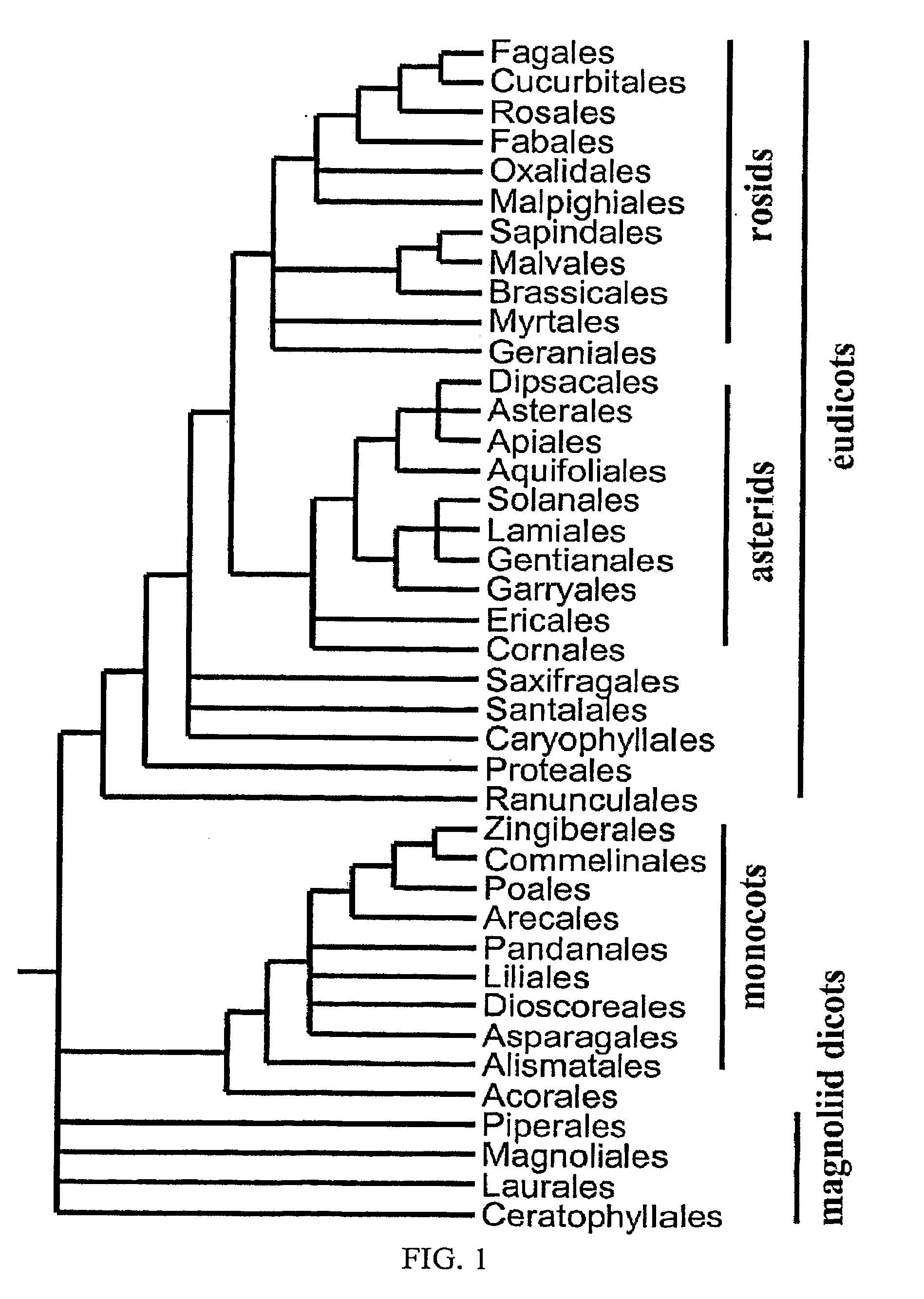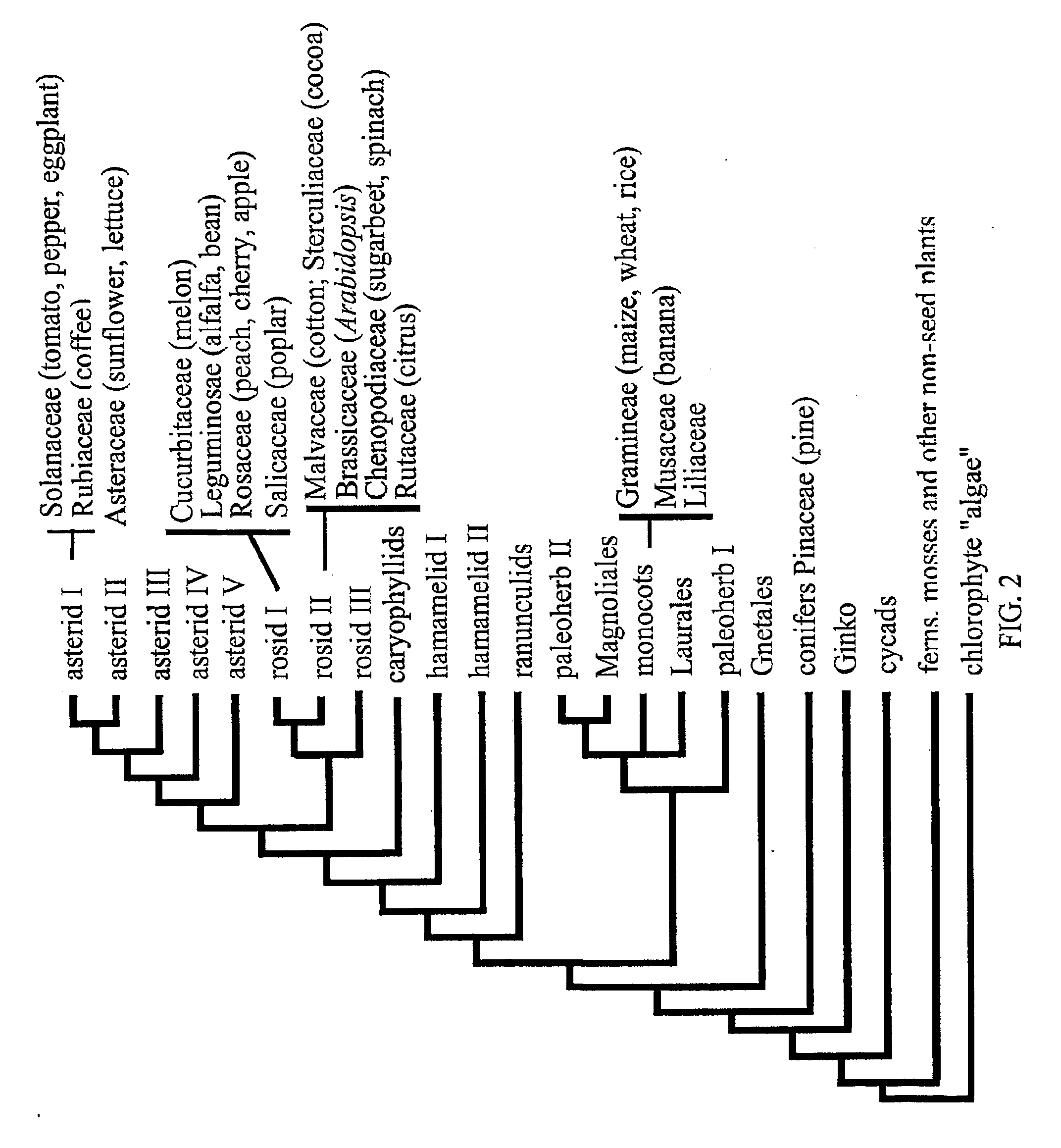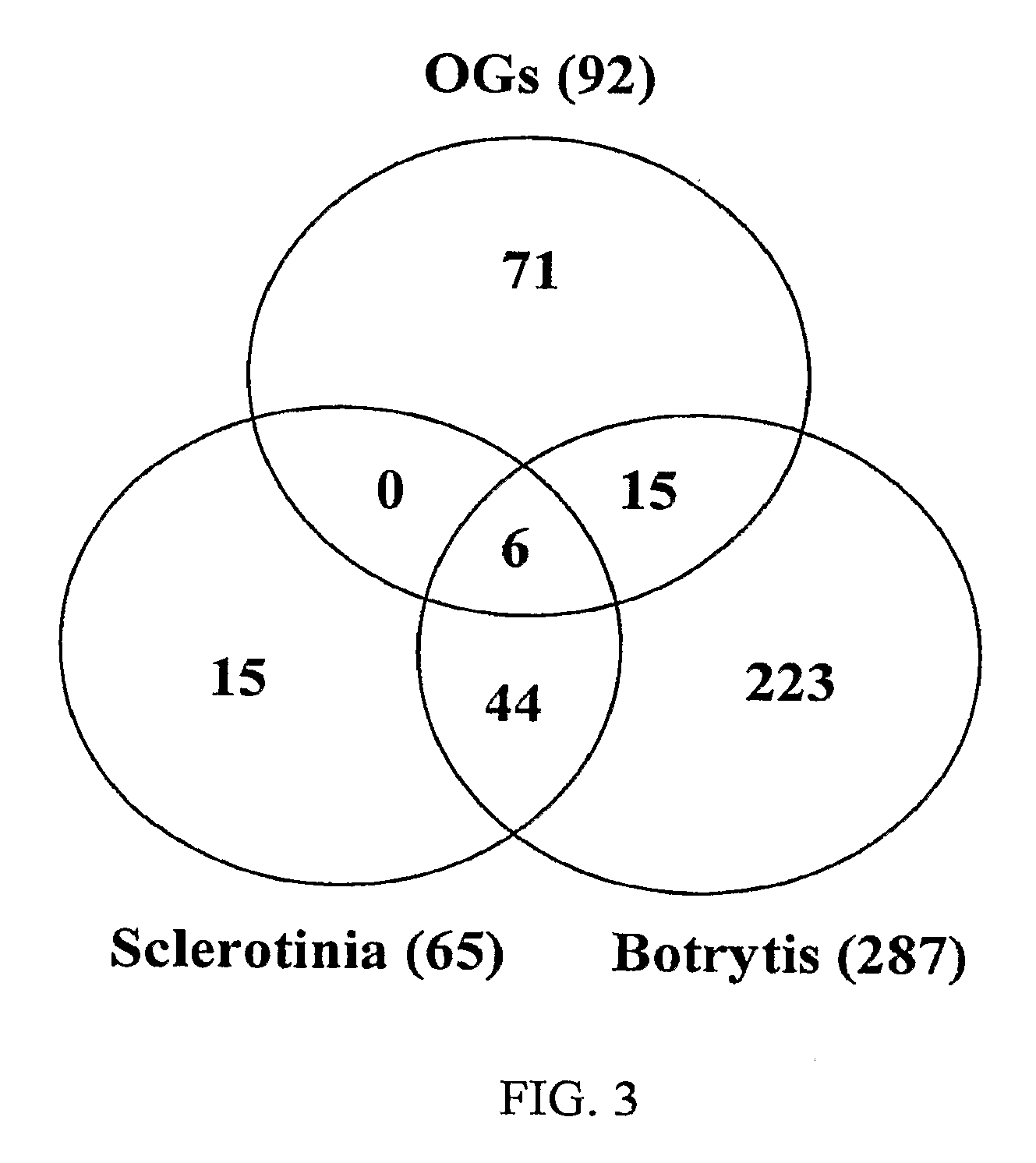Disease-inducible promoters
a disease-inducible promoter and promoter technology, applied in the field of plant genomics, can solve the problems of limited application of this technology to crop species, affecting the overall fitness and development of genes conferring resistance to pathogens, and not being durable in the field of r gene-mediated resistance, so as to improve the resistance to a plant disease
- Summary
- Abstract
- Description
- Claims
- Application Information
AI Technical Summary
Problems solved by technology
Method used
Image
Examples
example i
Time Courses for Microarray Experiments
[0063]Microarray analysis of multiple pathogenic interactions allowed the identification of a large number of disease-inducible genes. Baseline time courses in Arabidopsis were produced for treatment with salicylic acid, methyl jasmonate, and 1-aminocyclopropane-1-carboxylic acid (ACC), for infection with Sclerotinia, Botrytis and Erysiphe, and for treatment with oligogalacturonides elicitors. Additional time course microarrays were used to better defined the behavior of the lead candidate promoters in abiotic stress conditions, such as water deprivation in soil grown Arabidopsis plants, cold treatment of Arabidopsis seedlings, NaCl treatment of Arabidopsis seedlings, and mannitol treatment of Arabidopsis seedlings. In these baseline studies, we focused on early and medium-term responses, via samples collected over a time-course following the treatments. Specific methodology for these experiments is described below.
[0064]Sclerotinia and Botryti...
example ii
Definition of Criteria for Promoter Selection
[0069]Desired induction pattern: We hypothesized that promoters showing strong, early, and relatively sustained induction levels throughout disease progression would be good candidates for use in driving transcription factor expression.
[0070]A complication in defining criteria was the lack of spatial expression data in compatible interactions with Sclerotinia and Botrytis. The datasets used were limited to average expression at the whole seedling or rosette level, and did not distinguish between local and systemic responses. Spatial localization of gene induction may further vary during disease progression as the plant responds to pathogen ingress. A strong but highly localized response to the pathogen may translate into a relatively weak fold induction in mRNA prepared from whole seedlings, which would be indistinguishable from weak systemic induction. Because of this limitation, we chose weakly restrictive selection criteria in regards ...
example iii
Candidate Promoters
[0077]Analysis of disease-related microarrays, as described in the summary section, allowed the identification of candidate promoters with desirable expression characteristics. These promoters are listed in the Sequence Listing, which also includes fold induction in interactions with Sclerotinia, Botrytis, and OG-treatment. These promoters and the extent to which they were induced at various time points after the Sclerotinia, Botrytis, and OG-treatments are shown in Table 3.
TABLE 3Candidate promoter list generated from analysis of disease-related microarraysFold increase (hours post inoculation)AGISclerotinia FoldBotrytis FoldOGs Fold(SEQ IDInductionInductionInductionNO:)Description14848144816AT1G16420Hypothetical protein common192.51.31.5144.54.76.4−1(1)family; similar to latex-abundant protein(GI:4235430)(Heveabrasiliensis)AT1G26380FAD-linked oxidoreductase19.25.624136.213.61001.6(2)family, similar to SP|P30986reticuline oxidase precursor(Berberine-bridge-formin...
PUM
 Login to View More
Login to View More Abstract
Description
Claims
Application Information
 Login to View More
Login to View More - R&D
- Intellectual Property
- Life Sciences
- Materials
- Tech Scout
- Unparalleled Data Quality
- Higher Quality Content
- 60% Fewer Hallucinations
Browse by: Latest US Patents, China's latest patents, Technical Efficacy Thesaurus, Application Domain, Technology Topic, Popular Technical Reports.
© 2025 PatSnap. All rights reserved.Legal|Privacy policy|Modern Slavery Act Transparency Statement|Sitemap|About US| Contact US: help@patsnap.com



